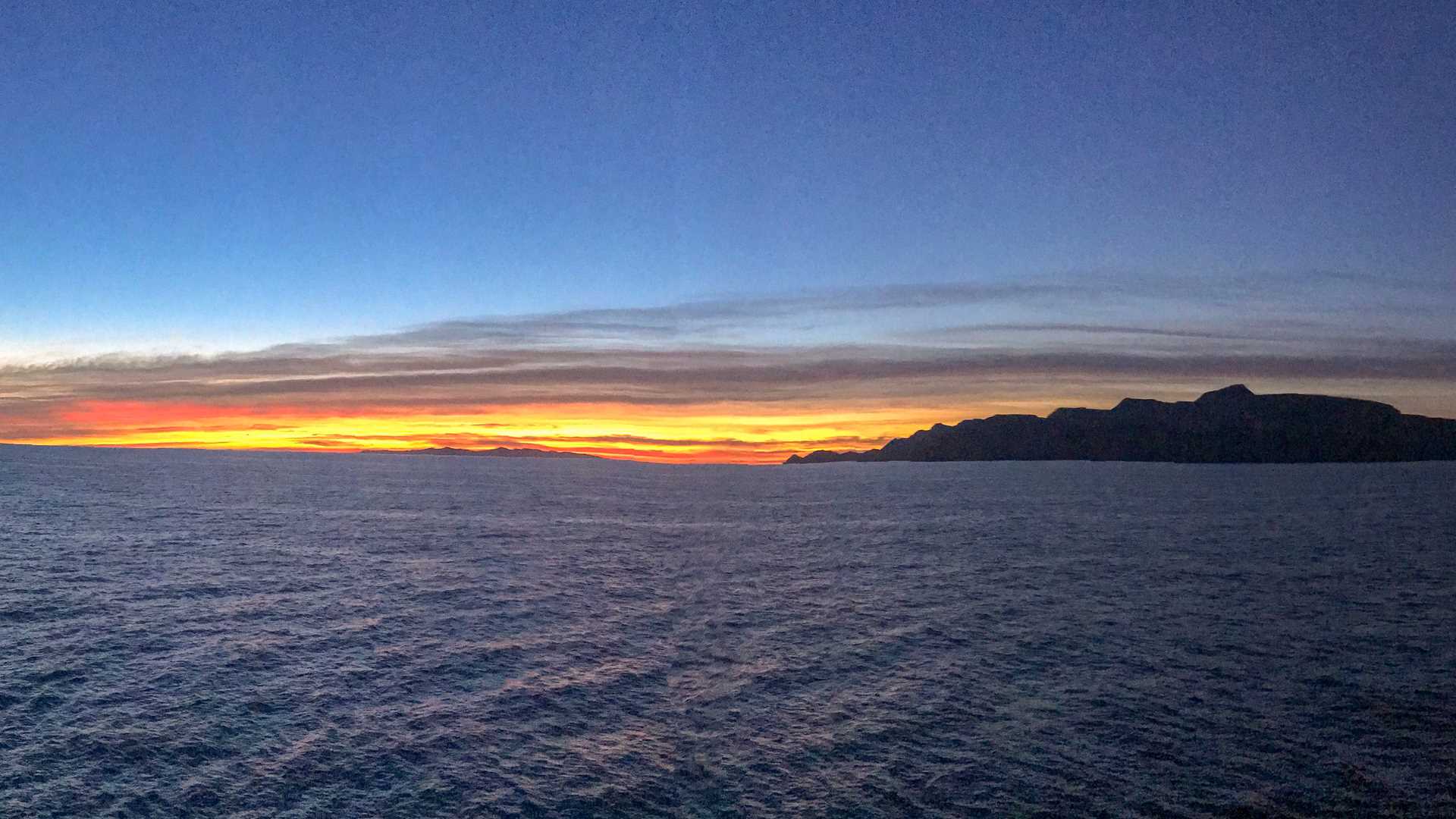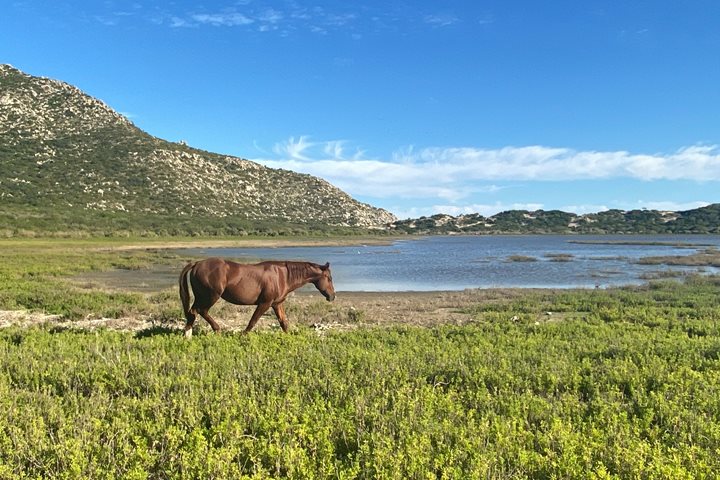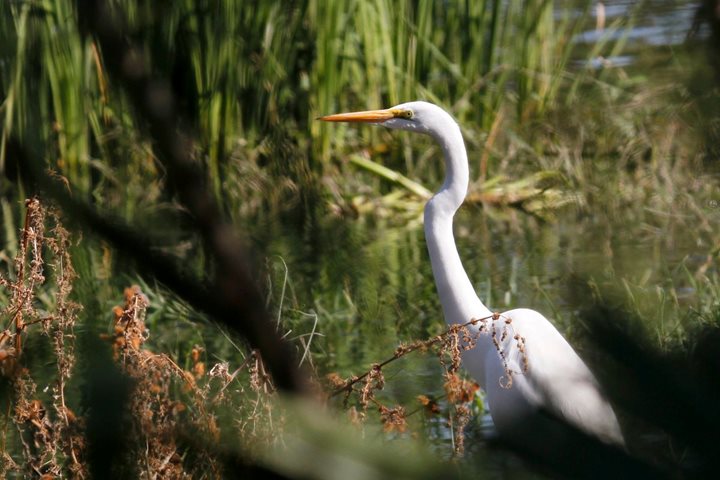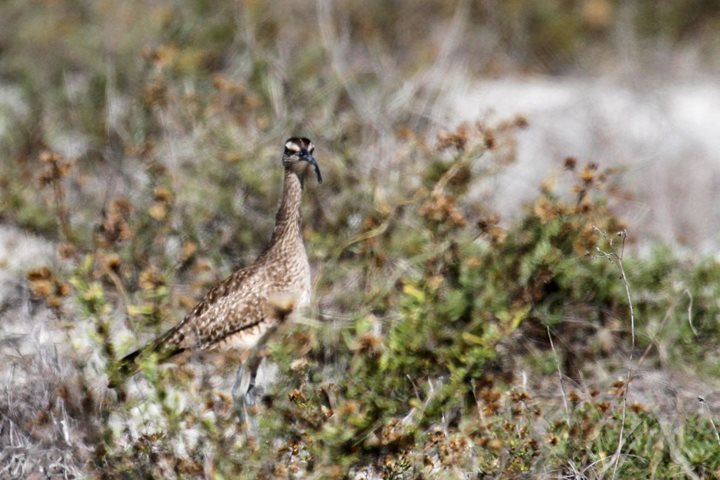Today culminated what it means to be in Baja California for those onboard National Geographic Venture. We woke up with the sun to interact with the residents of Los Islotes – hundreds of juvenile California sea lions, brown pelicans, and frigatebirds – by snorkeling and Zodiac cruising. After lunch, we anchored at Isla San Francisco for an afternoon of kayaking, paddleboarding, and hiking. To celebrate a fantastic voyage, we ended the night with a barbeque dinner around a beach bonfire.
- Daily Expedition Reports
- 18 Dec 2018
Los Islotes and Isla San Francisco, 12/18/2018, National Geographic Venture
- Aboard the National Geographic Venture
- California Coast
JIll Niederberger, Naturalist
Jill is an aquatic biologist, naturalist, divemaster, and captain with a love for everything living in and depending on water. Whether sailing catamarans, leading snorkeling tours, or assisting with cetacean field research projects, she enjoys connec...
Read MoreShare Report
A Southern Migration: From the Channel Islands to Baja California
VIEW ITINERARYRelated Reports
12/13/2021
Read
National Geographic Venture
San Jose del Cabo
In nature, borders are fluid and transition zones dynamic, as we are discovering on our voyage along the Pacific Coast. We traveled from the cool temperate waters of the California Coast to the warm, tropical waters of Baja California Sur. We have seen communities of fish, including the orange Garibaldi of the northern kelp forests and the bright reef fishes of the southern coral. As we crossed the Tropic of Cancer this morning, we moved into the tropics. A warm, humid wind welcomed us as we rounded the cape of the Baja Peninsula toward the Sea of Cortez, signaling our official entry into an ecosystem defined by arid desert mountains, lush freshwater oases, and abundant ocean waters. To begin our exploration, we landed in the town of San Jose del Cabo, where guests discovered the natural and cultural history of the peninsula’s southernmost point. Some walked through the estuary, an oasis in the desert to a huge diversity of bird life. Others took a historical tour of the town center with stops at the Catholic mission and an artisan glass blowing factory, both glimpses into a culture that thrives here in the heat of the desert. The tropics provide perfect conditions for marine megafauna; humpback whales migrate over 4,000 miles from summer feeding grounds in Alaska to take advantage of warm ocean waters as they give birth to their young. When we returned to the ship later in the day, we spotted multiple groups of these gentle giants almost immediately. A mother and newborn calf calmly swam along the surface while another group of four adult males tail-slapped and lunged in displays of competition. Simultaneously, bottlenose dolphins swam beneath the ship. All in all, an exciting and dramatic welcome to the warmth of the tropics! We will spend the last two days of the trip breathing it all in.
12/12/2021
Read
National Geographic Venture
Isla Magdalena
Today was our second day in the protected waters of the bay. National Geographic Venture lifted the anchor before sunrise, and sailed from Bahia Almejas to Bahia Magdalena. We sailed along Isla Santa Margarita as the sun started to rise, and by daytime we dropped the anchor near Isla Magdalena. Here we had our morning activities, which included walks across the island towards the Pacific side, into the mangroves for bird watching, or simply time to explore on our own. We landed on the south side of the island, not too far from the tiny town of Puerto Magdalena. The beauty of this place is unique. Today we learned about the myriad of creatures that inhabit the sand dunes, from coyotes and jackrabbits to the tiny beetles, mice and lizards. Once at the beach on the Pacific side of Isla Magdalena, everyone enjoyed their experience in a different way. Some sat down in the sand to contemplate the views, and others walked far along Bahia Santa Maria. The bird watchers found over thirty species of birds, while learning about plants and the dune ecosystem as they explored the mangroves. After a very nice morning on Magdalena Island, we sailed away from the bay into the Pacific Ocean once again, bound for the Los Cabos region. On our way out, before even leaving the bay, a humpback whale and its calf breached several times not too far from the ship. As we kept sailing, we had other encounters with several humpbacks and interesting seabirds.







